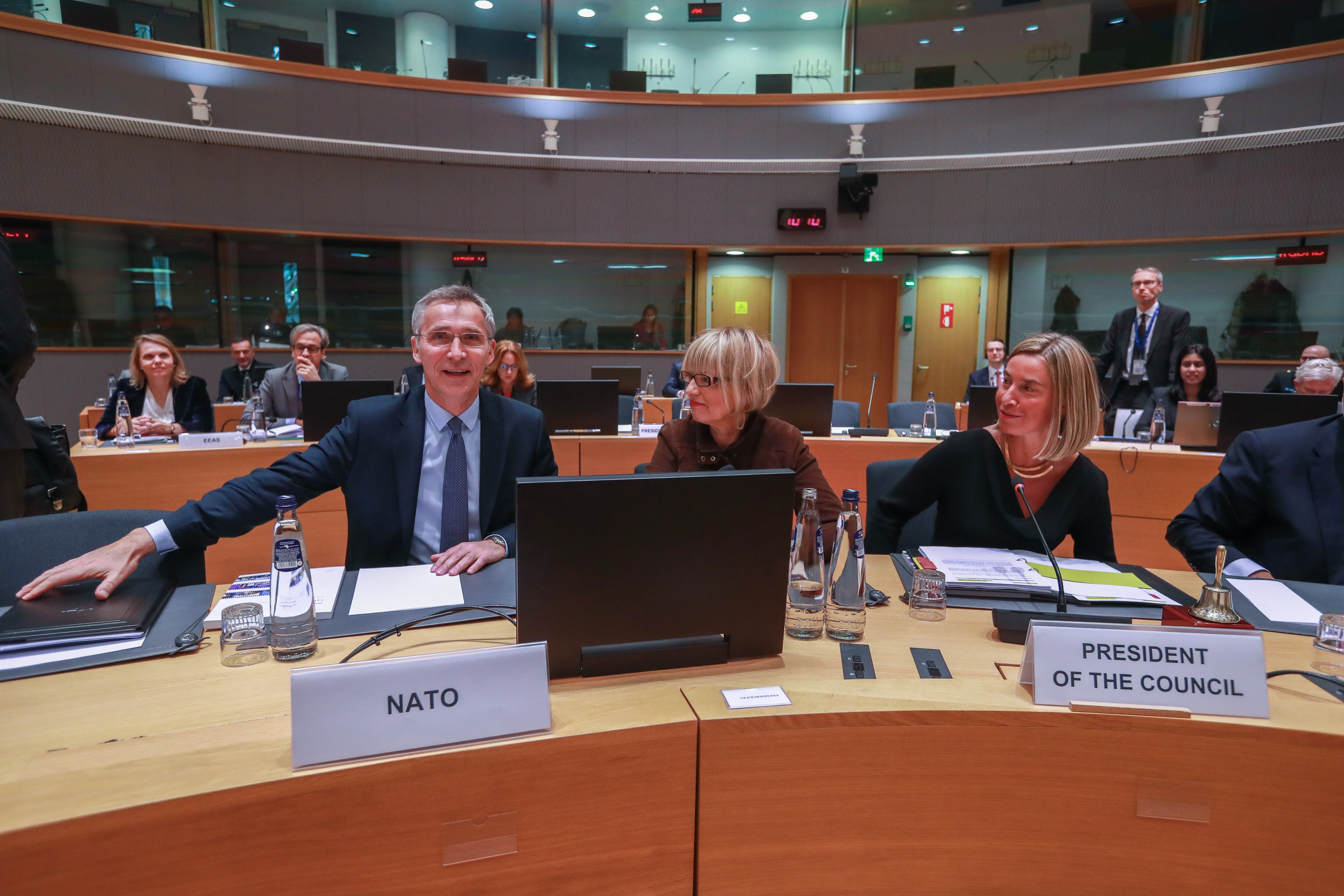COLOGNE, Germany — Missile-maker MBDA is banking on a new European Union project to help boost wider adoption of its Missile Moyenne Portée anti-tank weapon on the continent.
The confidence by executives stems from last week’s European Council approval of a Beyond-Line-of-Sight Land Battlefield Missile System. The project is one of 34 efforts under the union’s new Permanent Structured Cooperation scheme, or PESCO. The framework is meant to unify military capabilities of the member nations with an eye toward establishing the EU as a military player on the world stage.
The new missile project offers an glimpse into PESCO’s nascent process for turning political ambitions into actual hardware made by national vendors. Such is the case here, says MBDA, which released a statement saying its MMP anti-tank weapon had been “endorsed” by the EU even though the official, one-paragraph project description makes no mention of a specific weapon.
RELATED

Company executives told Defense News that the MMP is what defense officials in France — which has the project lead together with Belgium and Cyprus — had in mind from the start when offering the project under an EU umbrella.
The weapon, they argue, is the natural choice because it is already in service with French forces and because it is the sole wholly European option available. (MBDA is a joint venture of Airbus, BAE Systems and Leonardo.)
A spokeswoman for the French delegation to the EU in Brussels did not respond to multiple requests for comment.
The guided MMP, which boasts a range of 4 kilometers, can be fired by dismounted soldiers or from vehicles. Its competitors include the American-made Javelin and variants of the Spike, designed by Israel’s Rafael. The Israelis market their offering through the Germany-based company Eurospike, and the missiles are produced in that country.
But MBDA argues the “design authority” for both competitors lies outside of Europe, which means the joint venture would be ineligible for a role — and funding — under PESCO or its associated funding stream, the proposed €13 billion (U.S. $15 billion) European Defence Fund.
It remains to be seen whether the apparent PESCO blessing can help propel the MMP weapon to greater popularity in European armies. There is already lower-hanging fruit included in the partnership with project co-sponsor Belgium: Brussels plans to buy a new fleet of armored combat vehicles from France’s Nexter, a portion of which stands to be equipped with an anti-tank weapon.
That’s where EU funding support could come into play. Players of any PESCO project can get EU co-financing for the modification work required to make one weapon interoperable for several partner forces.
On paper, the EU missile project has ambitious goals. The weapon eventually chosen — presumably the MMP — “is intended to be integrated on an extensive variety of platforms,” a PESCO project overview states. “The project includes joint training and formation aspects. A dedicated ‘users club’ is envisioned develop a common European doctrine on BLOS firing.”
Industry officials expect an initial kickoff meeting of the partner nations to hammer out a way ahead, though the timing is unclear. At that point, there could be a formal commitment to the MMP weapon.
MBDA, for its part, is painting a purely altruistic picture of what’s to come for the missile. “France is opening a collaborative approach for how to use it,” a spokesman told Defense News.
Sebastian Sprenger is associate editor for Europe at Defense News, reporting on the state of the defense market in the region, and on U.S.-Europe cooperation and multi-national investments in defense and global security. Previously he served as managing editor for Defense News. He is based in Cologne, Germany.







